Abstract
Human lung fibroblasts (WI-38) in late exponential phase of growth, in stationary phase after confluency was reached, and at high or low number of population doublings were used to investigate the synthesis of proline and hydroxyproline from glutamate or arginine. Glutamate was from two to five times as effective a precursor as arginine; glutamine did not seem to be involved in these metabolic pathways. Accumulation of protein-bound hydroxyproline in cell layers was observed only after confluency. Confluent cells synthesized more proline from glutamate than did cells in late exponential growth. Conversion of glutamate into intracellular free proline was conducted also to a greater extent in confluent cells at a high number of population doublings. Conversion of glutamate into proline or hydroxyproline in cell-layer protein was not affected significantly by the number of population doublings. Less total protein as well as less hydroxyproline accumulated with cells at a high number of population doublings.
Full text
PDF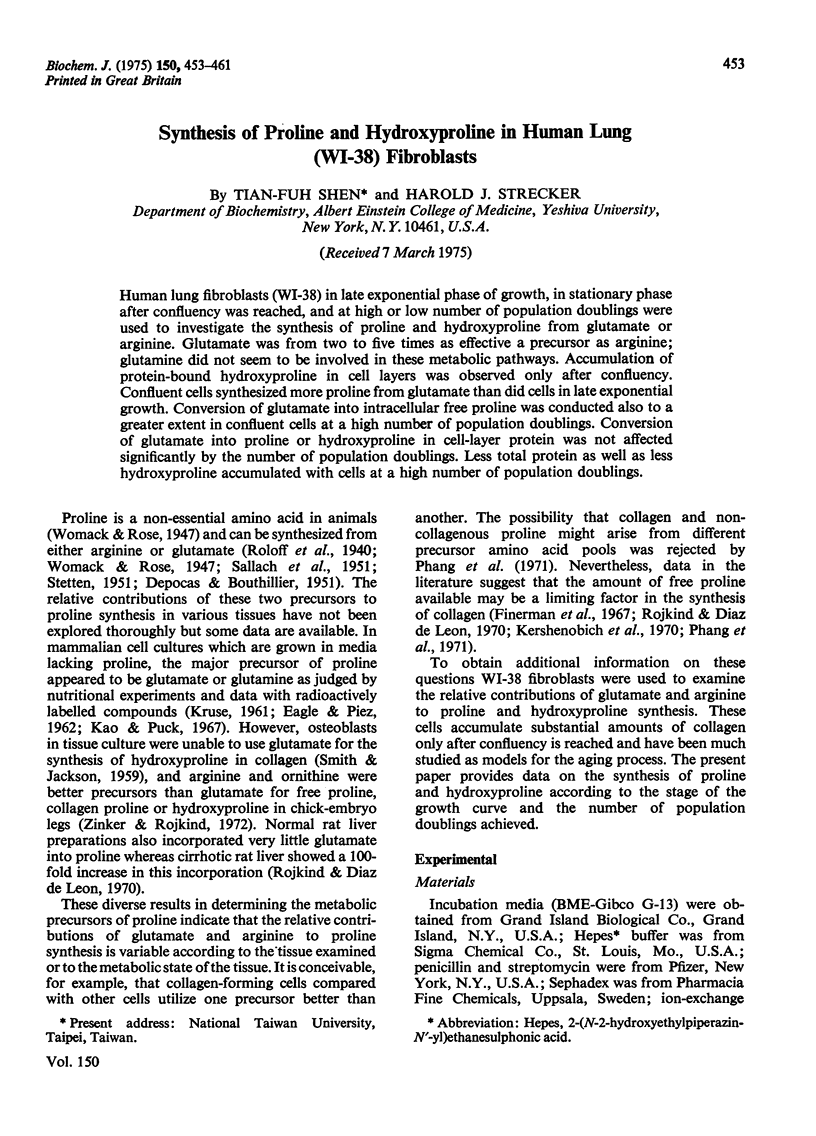
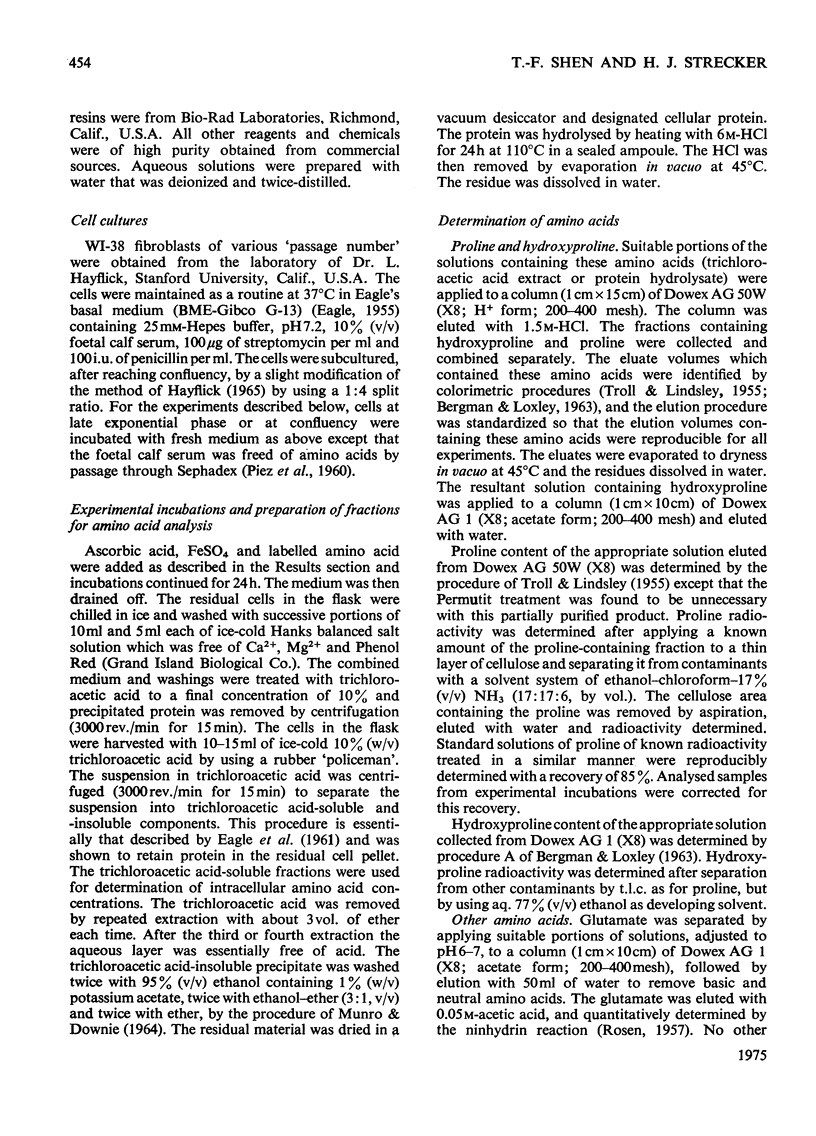
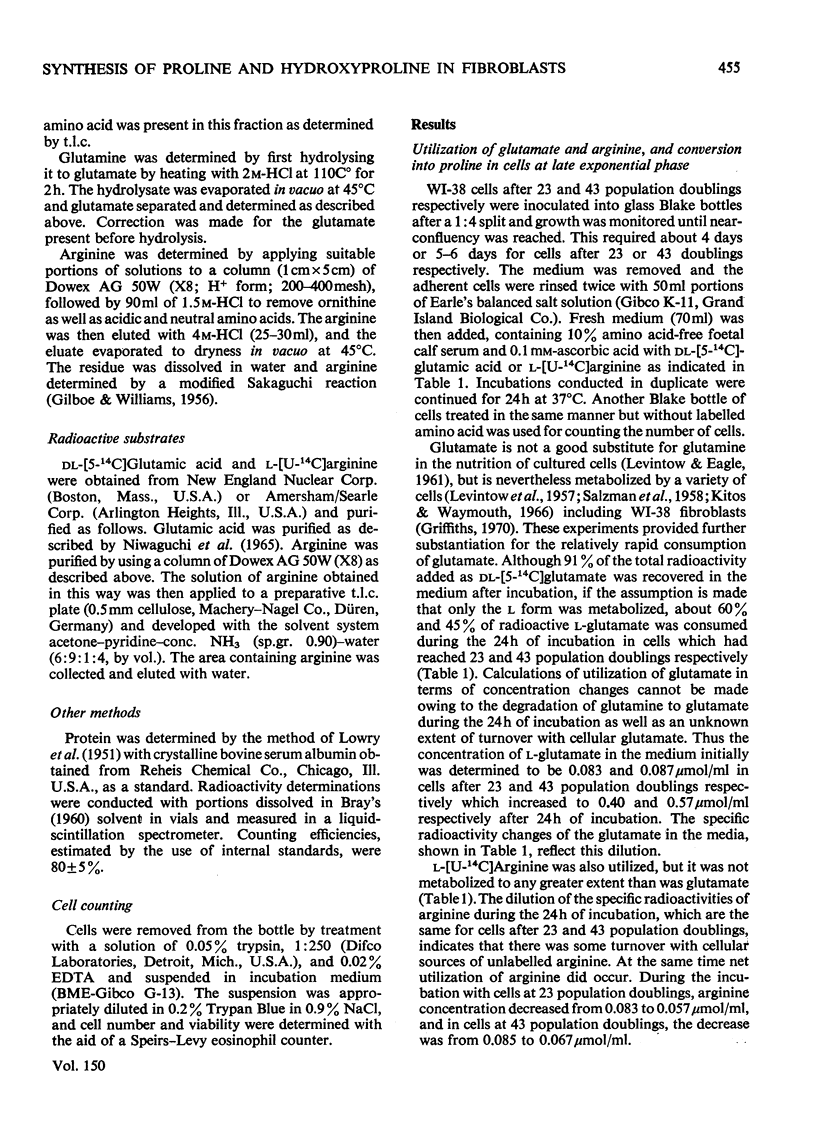
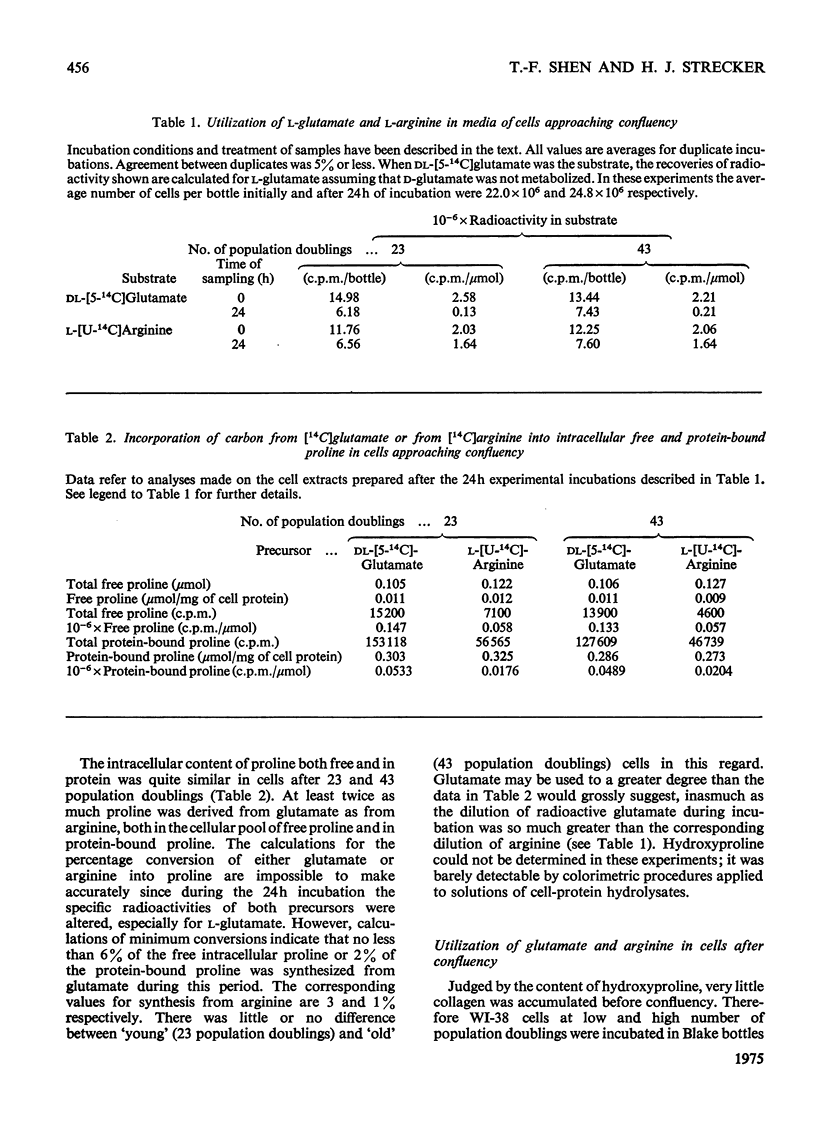
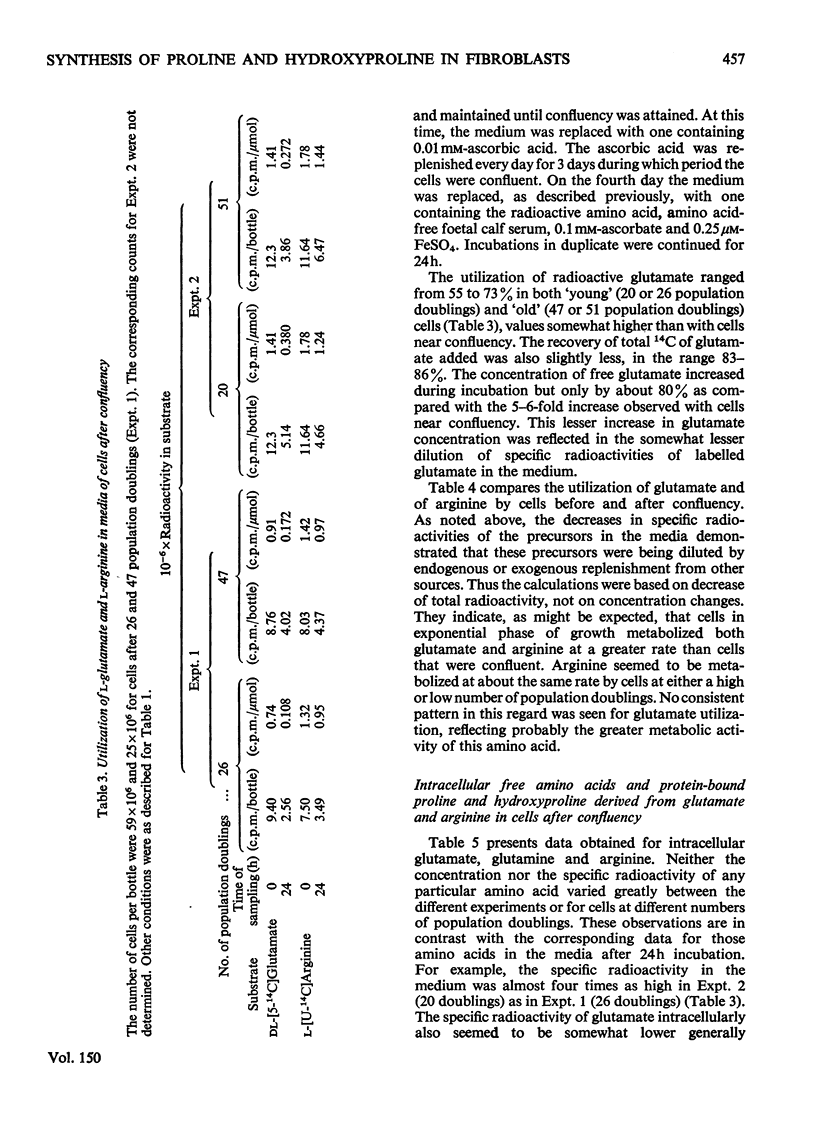
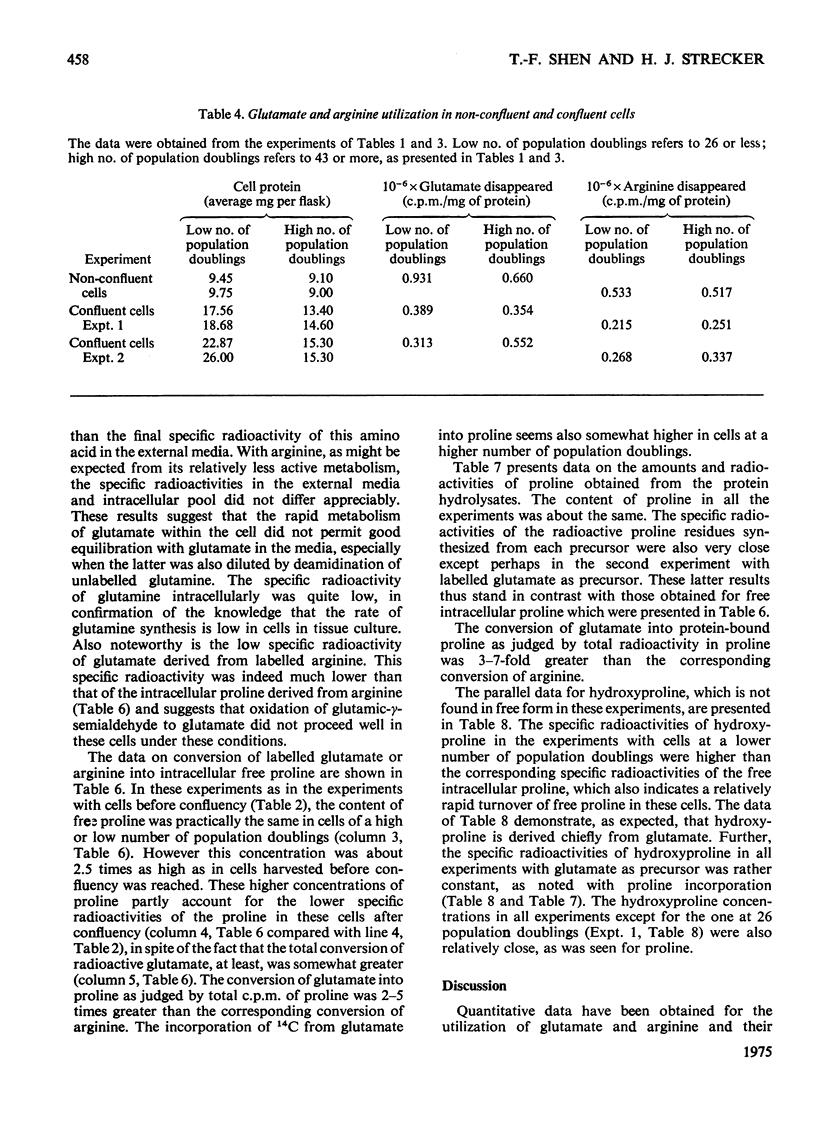
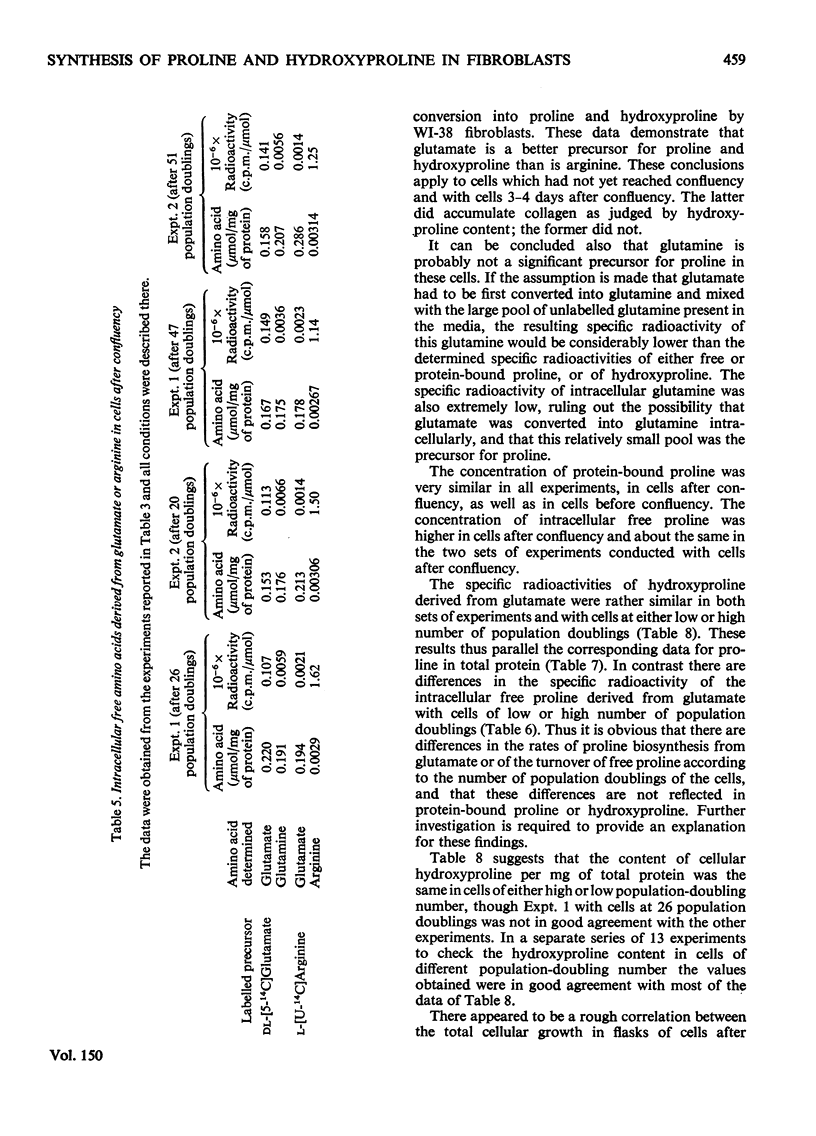
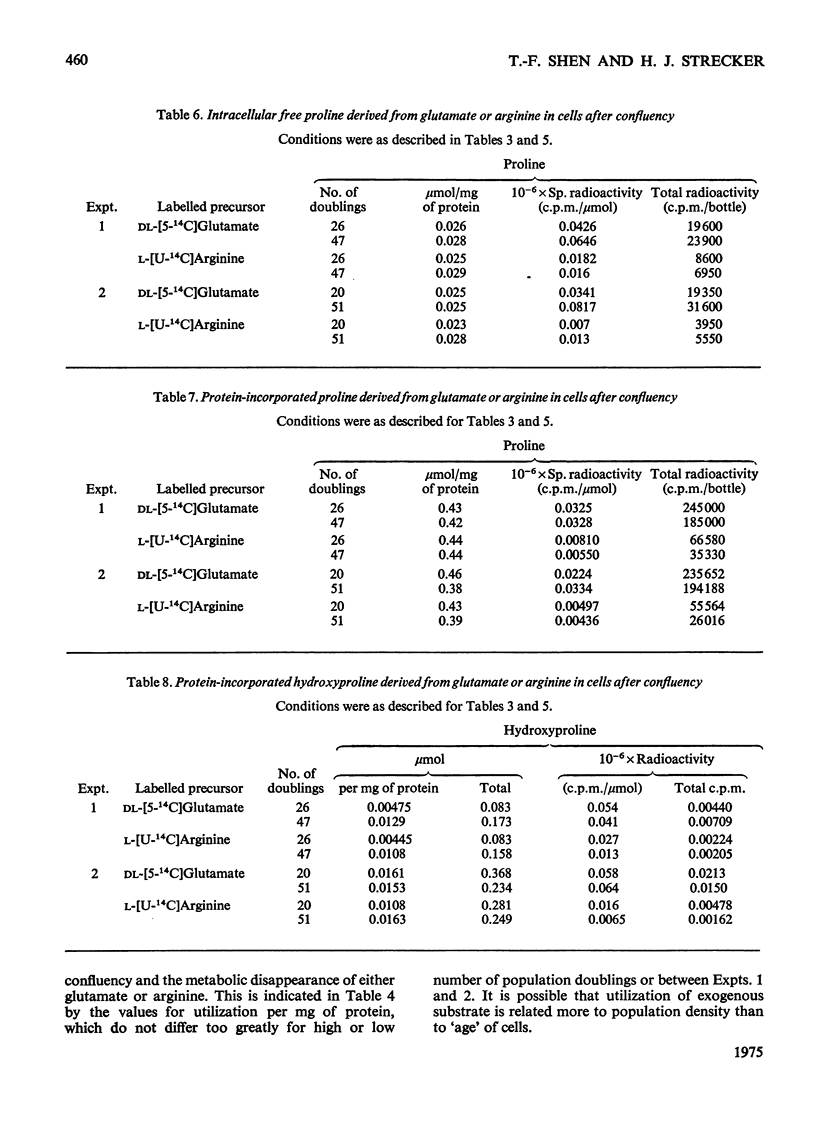
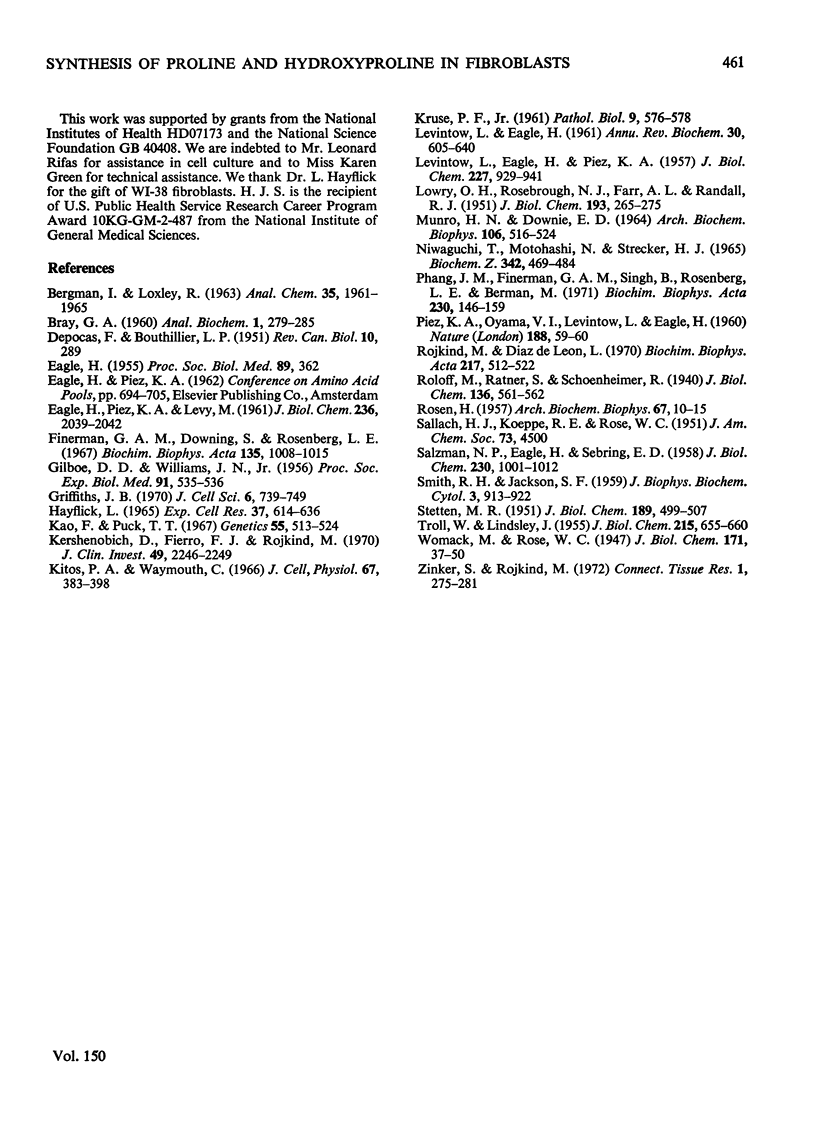
Selected References
These references are in PubMed. This may not be the complete list of references from this article.
- EAGLE H., PIEZ K. A., LEVY M. The intracellular amino acid concentrations required for protein synthesis in cultured human cells. J Biol Chem. 1961 Jul;236:2039–2042. [PubMed] [Google Scholar]
- EAGLE H. Propagation in a fluid medium of a human epidermoid carcinoma, strain KB. Proc Soc Exp Biol Med. 1955 Jul;89(3):362–364. doi: 10.3181/00379727-89-21811. [DOI] [PubMed] [Google Scholar]
- Finerman G. A., Downing S., Rosenberg L. E. Amino acid transport in bone. II. Regulation of collagen synthesis by perturbation of proline transport. Biochim Biophys Acta. 1967;135(5):1008–1015. doi: 10.1016/0005-2736(67)90071-5. [DOI] [PubMed] [Google Scholar]
- GILBOE D. D., WILLIAMS J. N., Jr Evaluation of the Sakaguchi reaction for quanitative determination of arginine. Proc Soc Exp Biol Med. 1956 Apr;91(4):535–536. doi: 10.3181/00379727-91-22318. [DOI] [PubMed] [Google Scholar]
- Griffiths J. B. The quantitative utilization of amino acids and glucose and contact inhibition of growth in cultures of the human diploid cell, WI-38. J Cell Sci. 1970 May;6(3):739–749. doi: 10.1242/jcs.6.3.739. [DOI] [PubMed] [Google Scholar]
- HAYFLICK L. THE LIMITED IN VITRO LIFETIME OF HUMAN DIPLOID CELL STRAINS. Exp Cell Res. 1965 Mar;37:614–636. doi: 10.1016/0014-4827(65)90211-9. [DOI] [PubMed] [Google Scholar]
- Kao F. T., Puck T. T. Genetics of somatic mammalian cells. IV. Properties of Chinese hamster cell mutants with respect to the requirement for proline. Genetics. 1967 Mar;55(3):513–524. doi: 10.1093/genetics/55.3.513. [DOI] [PMC free article] [PubMed] [Google Scholar]
- Kershenobich D., Fierro F. J., Rojkind M. The relationship between the free pool of proline and collagen content in human liver cirrhosis. J Clin Invest. 1970 Dec;49(12):2246–2249. doi: 10.1172/JCI106443. [DOI] [PMC free article] [PubMed] [Google Scholar]
- Kitos P. A., Waymouth C. The metabolism of L-glutamate and L-5-carboxy-pyrrolidone by mouse cells (NCTC clone 929) under conditions of defined nutrition. J Cell Physiol. 1966 Jun;67(3):383–398. doi: 10.1002/jcp.1040670304. [DOI] [PubMed] [Google Scholar]
- LEVINTOW L., EAGLE H., PIEZ K. A. The role of glutamine in protein biosynthesis in tissue culture. J Biol Chem. 1957 Aug;227(2):929–941. [PubMed] [Google Scholar]
- LOWRY O. H., ROSEBROUGH N. J., FARR A. L., RANDALL R. J. Protein measurement with the Folin phenol reagent. J Biol Chem. 1951 Nov;193(1):265–275. [PubMed] [Google Scholar]
- Niwaguchi T., Motohashi N., Strecker H. J. The metabolic conversion of L-glutamate to pyrrolidone carboxylate in rat tissues. Biochem Z. 1965 Aug 19;342(4):469–484. [PubMed] [Google Scholar]
- PIEZ K. A., OYAMA V. I., LEVINTOW L., EAGLE H. Proteolysis in stored serum and its possible significance in cell culture. Nature. 1960 Oct 1;188:59–60. doi: 10.1038/188059a0. [DOI] [PubMed] [Google Scholar]
- Phang J. M., Finerman G. A., Singh B., Rosenberg L. E., Berman M. Compartmental analysis of collagen synthesis in fetal rat calvaria. I. Perturbations of proline transport. Biochim Biophys Acta. 1971 Jan 26;230(1):146–159. doi: 10.1016/0304-4165(71)90062-6. [DOI] [PubMed] [Google Scholar]
- ROSEN H. A modified ninhydrin colorimetric analysis for amino acids. Arch Biochem Biophys. 1957 Mar;67(1):10–15. doi: 10.1016/0003-9861(57)90241-2. [DOI] [PubMed] [Google Scholar]
- Rojkind M., Diaz de León L. Collagen biosynthesis in cirrhotic rat liver slices a regulatory mechanism. Biochim Biophys Acta. 1970 Oct 15;217(2):512–522. doi: 10.1016/0005-2787(70)90548-4. [DOI] [PubMed] [Google Scholar]
- SALZMAN N. P., EAGLE H., SEBRING E. D. The utilization of glutamine, glutamic acid, and ammonia for the biosynthesis of nucleic acid bases in mammalian cell cultures. J Biol Chem. 1958 Feb;230(2):1001–1012. [PubMed] [Google Scholar]
- SMITH R. H., JACKSON S. F. Studies on the biosynthesis of collagen. II. The conversion of 14C-L-proline to 14C-hydroxyproline by fowl osteoblasts in tissue culture. J Biophys Biochem Cytol. 1957 Nov 25;3(6):913–922. doi: 10.1083/jcb.3.6.913. [DOI] [PMC free article] [PubMed] [Google Scholar]
- STETTEN M. R. Mechanism of the conversion of ornithine into proline and glutamic acid in vivo. J Biol Chem. 1951 Apr;189(2):499–507. [PubMed] [Google Scholar]
- TROLL W., LINDSLEY J. A photometric method for the determination of proline. J Biol Chem. 1955 Aug;215(2):655–660. [PubMed] [Google Scholar]


